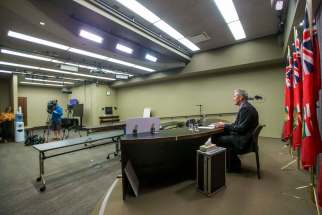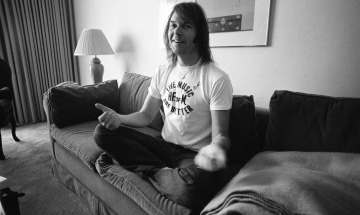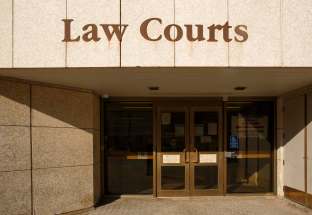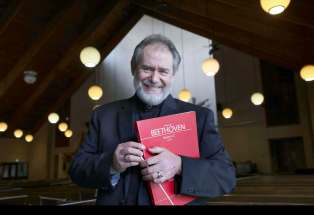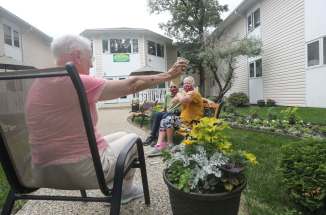Access to public spaces widens, access to decision-makers remains restricted
Read this article for free:
or
Already have an account? Log in here »
To continue reading, please subscribe:
Monthly Digital Subscription
$0 for the first 4 weeks*
- Enjoy unlimited reading on winnipegfreepress.com
- Read the E-Edition, our digital replica newspaper
- Access News Break, our award-winning app
- Play interactive puzzles
*No charge for 4 weeks then price increases to the regular rate of $19.00 plus GST every four weeks. Offer available to new and qualified returning subscribers only. Cancel any time.
Monthly Digital Subscription
$4.75/week*
- Enjoy unlimited reading on winnipegfreepress.com
- Read the E-Edition, our digital replica newspaper
- Access News Break, our award-winning app
- Play interactive puzzles
*Billed as $19 plus GST every four weeks. Cancel any time.
To continue reading, please subscribe:
Add Free Press access to your Brandon Sun subscription for only an additional
$1 for the first 4 weeks*
*Your next subscription payment will increase by $1.00 and you will be charged $16.99 plus GST for four weeks. After four weeks, your payment will increase to $23.99 plus GST every four weeks.
Read unlimited articles for free today:
or
Already have an account? Log in here »
Hey there, time traveller!
This article was published 23/06/2020 (2000 days ago), so information in it may no longer be current.
Manitobans can go bowling, congregate in small church groups and lounge on patios, but journalists wanting to question the premier on critical decisions meant to preserve health and avoid economic collapse during the COVID-19 pandemic must use an unreliable phone-in service.
Three months into the pandemic, the provincial government is giving journalists less access than other provinces, and this week made a key announcement on Twitter, with no opportunity for reporters to question the relevant minister.
That’s a bad look at a time when governments are spending unprecedented amounts and implementing historic restrictions on freedoms, argues Carleton University journalism professor Paul Adams.
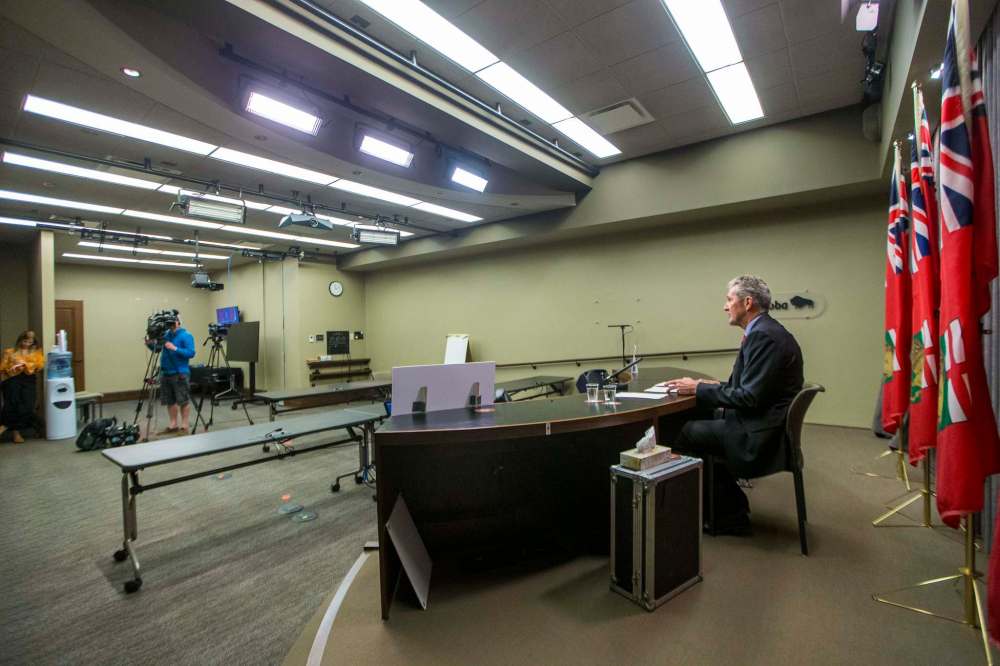
“It’s not surprising that politicians and other decision-makers take advantage of situations to reduce their degree of accountability,” said Adams.
“Manitoba is at this point one of the best performing jurisdictions in country, in terms of COVID — it’s not obvious why it would be a laggard, in terms of direct access of the media to decision-makers.”
The provincial government insists it’s being transparent, and is working to increase media access, but Manitoba’s shoddy phone-in system lags behind other legislatures.
Saskatchewan, for example, has allowed about four journalists into its daily briefings since the start of the pandemic, in addition to phone-in questions.
Media access varies by province
Press access has varied at legislatures across Canada during the COVID-19 pandemic.
Press access has varied at legislatures across Canada during the COVID-19 pandemic.
In Saskatchewan, journalists have phoned into near-daily press conferences, and at least a handful have been allowed into the room with the premier or public-health officials, which recently expanded to allow 15 reporters.
“On the phone, you’re not seeing things in real time; you’re not always hearing things clearly,” said CBC reporter Adam Hunter, who heads the press gallery in Regina.
Ministers have also been regularly available as of last week, with staff putting them at podiums that keep an appropriate distance from journalists.
New Brunswick’s cabinet ministers have followed a similar protocol for a month.
British Columbia is still only allowing phone questions at news conferences despite an earlier loosening of restrictions. Until recently, reporters could only ask a single question.
But as the legislature in Victoria resumed sittings Monday, a pool camera was set up for ministers to take reporters’ questions in-person.
“We spent a month working with government, opposition and the legislature to make sure we have access, as we would if things were operating normally,” said Richard Zussman, head of the B.C. press gallery.
Alberta, which opened much later, is keeping government press conferences to phones-only, despite the opposition NDP having press conferences in the legislature rotunda.
That province’s press-gallery head, Catherine Griwkowsky, said government staff limit reporters to only one question without a followup, though that rule “applies very inconsistently” with some outlets allowed multiple questions, and others consistently put last.
“When you’re in the room, you can just jump in, or back each other up if a reporter’s question is not being answered. The phone doesn’t lend itself to that,” said Griwkowsky, though she was glad a variety of outlets take part in the calls.
“When the building itself is closed off to the public, it’s so important to have eyes and ears here,” she said from Edmonton.
On Parliament Hill, which is wedged between the two provinces with the worst spread of COVID-19, federal ministers have had daily press conferences since the start of the pandemic.
Those occur through a mix of in-person questions and phone-in questions, with a range of journalists selected from a daily queue based on criteria outlined by the Parliamentary Press Gallery such as language and audience size.
—Dylan Robertson
That province, whose COVID-19 spread has largely been in lockstep with Manitoba’s, allowed up to 15 reporters into the briefings last week.
Manitoba’s press gallery, which includes multiple Free Press staff, has been in talks with the government to change the press conferences with figures like Dr. Brent Roussin, the chief provincial public health officer, and Premier Brian Pallister.
Officials have suggested allowing fewer than 10 journalists into the press theatre, known as Room 68, but journalists have insisted on using a larger committee room.
Adams worked as a student staffer at the Manitoba Legislature in the 1970s, and has covered its happenings on-and-off up until the early 2000s.
He said it should be easy to find a large space, such as when the annual budget lock-up hosts dozens of journalists in a closed committee room.
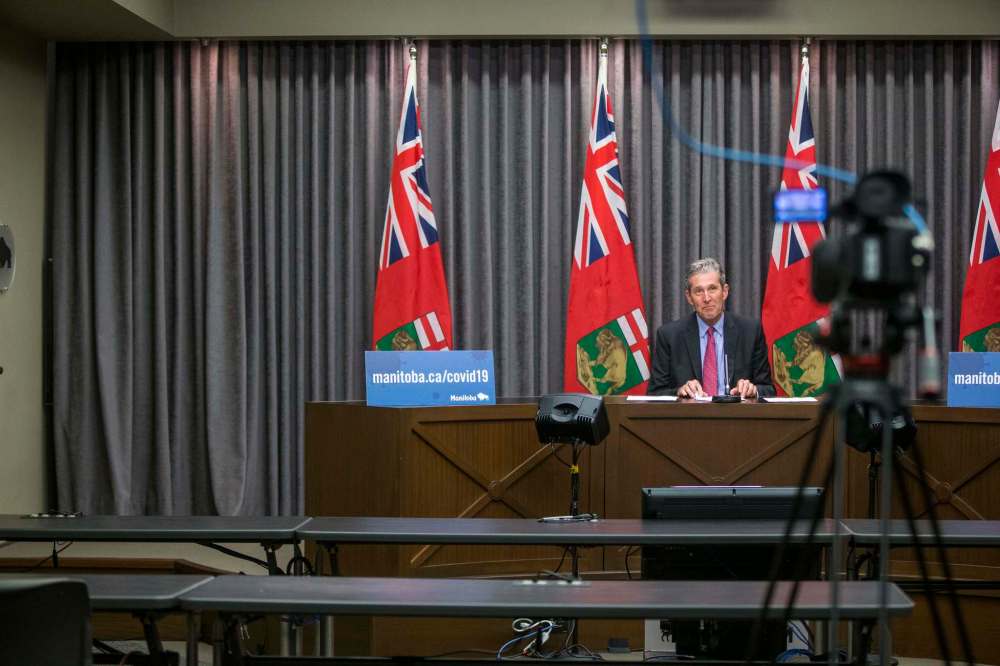
“It’s one of the most gracious, spacious and beautiful legislative buildings in the world, and it’s got plenty of large spaces,” he said. “I know; I’ve worked in them.”
Pallister insisted Tuesday that he’s been available to reporters, and said his office has been in touch with Roussin to craft a safe plan for press conferences.
“We continue to make sure that the ministers of the Manitoba government are available to the media, (and) that I’m available to the media,” the premier told the Free Press.
“I think it would be wonderful to have such opportunities and I hope we can do this in the very near future; I long for the day.”
Pallister’s spokeswoman Olivia Billson added that talks with the press gallery are ongoing “to restore access to the news-conference theatre,” which suggests they won’t be moved into a larger room.
In the past month, ministers have held some outdoor press availabilities.
On Tuesday, reporters gathered in the rotunda leading to the legislative chamber to hear from Families Minister Heather Stefanson, which appears to be the first indoors availability since the pandemic shut down Manitoba three months ago.
But that doesn’t mean the Pallister government is getting more open with media.
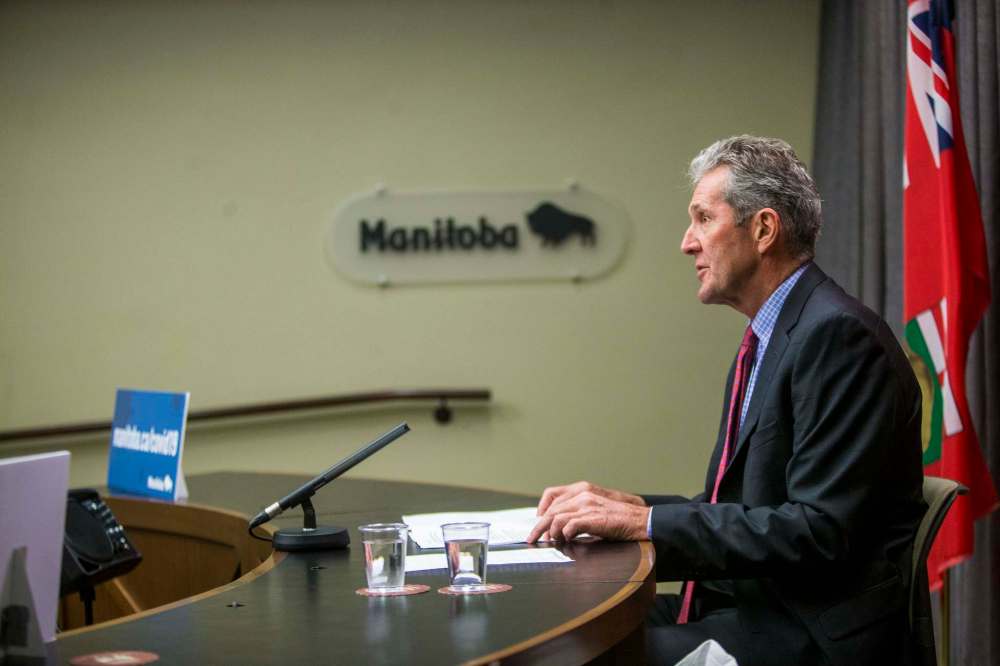
On Monday, Education Minister Kelvin Goertzen announced on Twitter when schools would resume in the province. There was no press release, and Goertzen was nowhere to be seen Tuesday.
Adams was baffled that nobody in the Pallister government had arranged a press conference for a topic impacting every parent of school-aged children in Manitoba.
“That’s a very consequential announcement,” Adams said, arguing it would never be acceptable to simply drop it into a press release during normal times, let alone Twitter during a pandemic.
“That’s just absurd,” he said.
When asked why the news was kept to social media, Pallister told reporters Tuesday that it was “a tentative announcement,” pending a final decision based on the pandemic’s condition.
Seconds later, another journalist asked a question that could not be heard through a choppy phone line, though she did get through on the second attempt.
On June 15, Manitoba’s phone-in line simply stopped working, at which point government staff asked journalists to email in their questions, which were then read out by the government employee.
Some questions were duplicates, and some became redundant based on provided answers. Because the questions were written in advance, it was impossible to ask an appropriate followup question.
“Being physically present makes a difference in terms of your ability to have questions, to interject and have real responses, and to have effective accountability,” Adams said.
dylan.robertson@freepress.mb.ca
History
Updated on Wednesday, June 24, 2020 7:26 AM CDT: Clarifies that on June 15, Manitoba’s phone-in line stopped working


